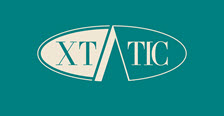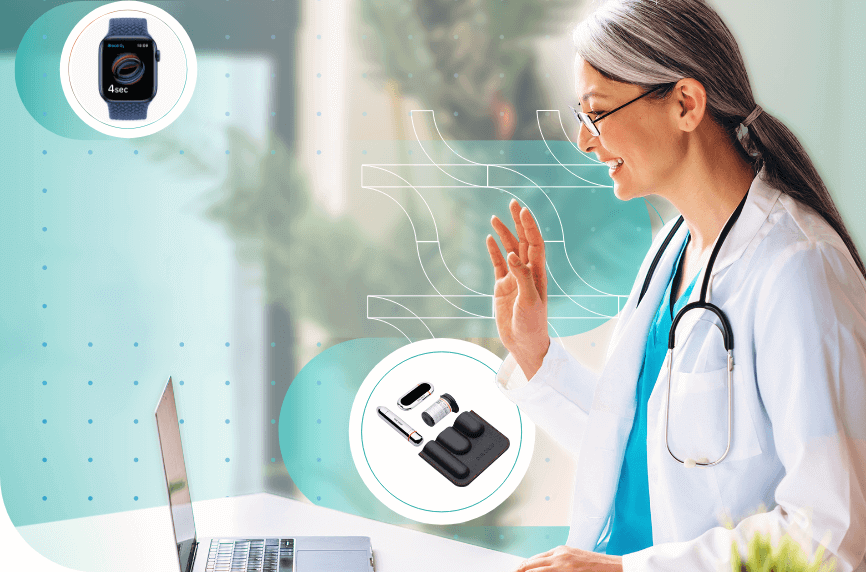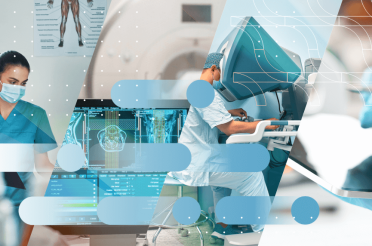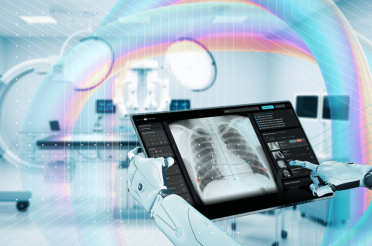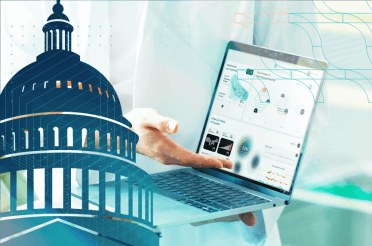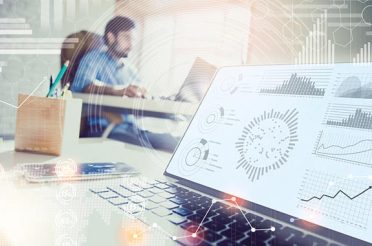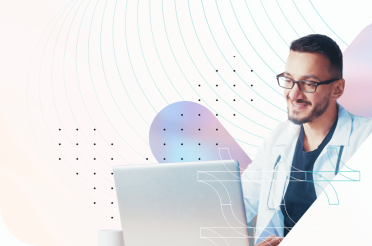The Covid-19 pandemic showed us that people may not always have easy access to healthcare facilities. Many patients had difficulties contacting their healthcare professionals and had to search for remote healthcare. In this environment, the Internet of Things (IoT) healthcare devices enable healthcare professionals to monitor patients remotely instead.
What are IoT healthcare devices?
IoT device is a term that describes wearable devices such as smartwatches and implanted medical devices connected to the Internet. Some IoT devices could be embedded in a person’s body.
This connection enables several features, such as:
- automation of tasks
- remote collection of healthcare data
- analyzing data and suggesting solutions
- creating patient healthcare reports
These IoT healthcare devices have a lot of different uses, some of which may even become the new standard of healthcare. For these reasons, the market for IoT devices will likely reach USD 94.2 billion by 2026.
The term Internet of Things (IoT) may seem confusing at first. To fully explain the topic, we will highlight ten Internet of Things (IoT) healthcare examples.
1. Remote patient monitoring (RPM)
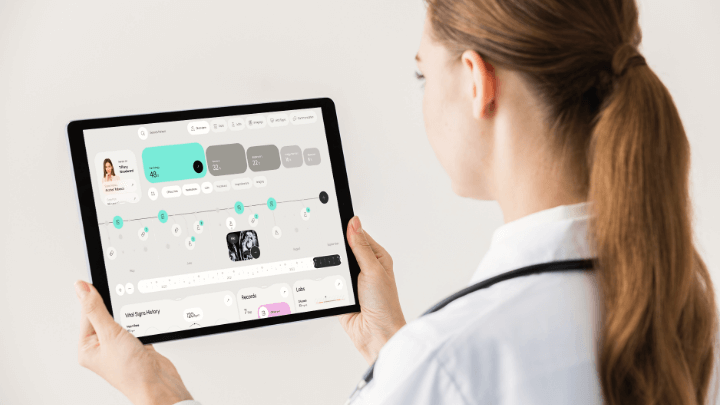
Wearable devices such as smartwatches, phones, or wearable sensors automatically collect health metrics. These remote patient monitoring devices collect healthcare data such as body temperature, blood pressure, body-fat percentage, etc. These IoT health devices then display this patient data and send it to healthcare providers.
As already mentioned, visiting a healthcare facility may not always be possible for a person. But even if a visit is available, healthcare professionals may only receive the person’s healthcare biometric once he is at the hospital. However, many conditions require continuous patient monitoring, and collecting data would require a stay at the healthcare facility.
Remote patient monitoring devices eliminate that need by providing a stream of information. These healthcare IoT devices can even recommend treatments or generate alerts based on the information gathered. For example, a sudden spike or drop in a patient’s blood pressure may alert healthcare providers of a potential need for intervention.
The main concern with these IoT healthcare devices is that sensitive data is at risk as a result of the constant monitoring of patients. Hackers may seek to obtain information from such devices.
The main issue before healthcare companies is protecting highly personal data in compliance with laws such as the General Data Protection Regulation (GDPR) or the Health Insurance Portability and Accountability Act (HIPAA).

Explore the full IoT potential in healthcare
Be guided through the possibilities to lead the way in smart healthcare IoT solutions by booking a discovery call today.

To that end, secure IoT hardware and software are a priority for most modern devices. Therefore, working with healthcare companies able to provide sufficient data security will be a must for the healthcare industry.
2. Glucose monitoring
Glucose monitoring devices include embedded or wearable sensors that automatically monitor a patient’s glucose level, keep a record of the data, and even alert medical professionals. Some devices which can be embedded even have the functionality of automatically supplying insulin when needed.
Traditionally, such monitoring of patients has been challenging since manual glucose monitoring only provides data for the current glucose level of a patient. However, if these levels constantly fluctuate, this type of monitoring will be insufficient.
The advantages of using these IoT sensors are not only the ability for constant monitoring but a reduced time on data entry and paperwork, as well as reduced risk of human errors when doing the paperwork.
More importantly, these medical devices assist patients in monitoring their sugar levels themselves more. Further, some devices can automatically regulate insulin levels, which leads to an increased quality of life. All of which lead to more precise monitoring and patient care.
However, there are two main challenges in the field. Firstly, developing devices are small enough that they do not disrupt a patient’s life. Secondly, companies must create IoT devices that do not require much electricity and do not need a frequent recharge.
Yet, medical experts are not overly concerned with these problems. Recent advancements in healthcare technology have already begun addressing these concerns.
3. Heart-rate monitoring
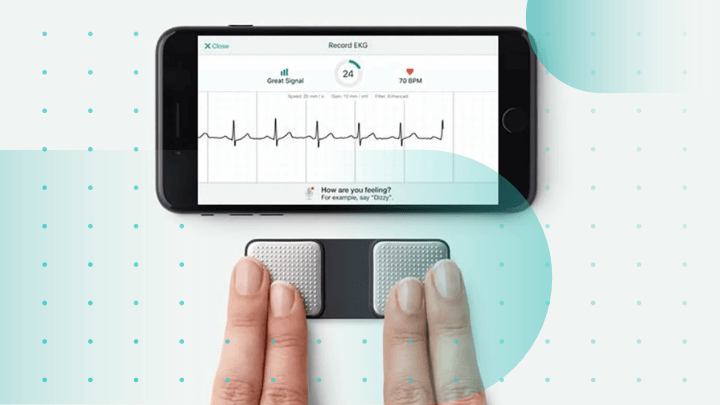
Unlike glucose monitoring devices, IoT devices monitoring the heart-rate of a patient are already portable. Many devices like smartwatches or IoT sensors already provide effortless constant monitoring of a person’s heart rate. Thus, data can be collected even while the patient is sleeping
Monitoring the fluctuation of the heart-rate is more challenging when compared to glucose monitoring since it is affected by various activities during the day.
Even during a stay at a healthcare facility, routine heart-rate checkups may not be sufficient against these fluctuations. For these reasons, patients need to be monitored by wired machines for continuous cardiac monitoring, which impacts their mobility.
IoT devices, on the other hand, provide a cheaper alternative that does not require patients to stay in a hospital. All of this has a positive effect on the person’s quality of life. Another functionality is allowing people to keep track of their heart rate.
Yet, the main issue is the accuracy of the heart rate monitoring. Medical devices in hospitals provide more accurate information than IoT devices.
However, that is not to say that the portable versions are unreliable. Most modern devices already provide at least 90 percent accuracy in their data collected. The increased mobility and reduced cost already likely outweigh the slightly reduced accuracy for most people.
4. Hand hygiene monitoring
Lately, many hospitals and other healthcare facilities are using hygiene monitoring IoT devices to ensure proper standards of cleanliness. People use these healthcare devices to remind them to sanitize their hands at regular intervals or whenever they enter a specific room.
Many hospital rooms often house critically ill patients. Introducing any pathogens may further complicate the conditions of these patients. Even if working with relatively healthy patients, proper decontamination procedures are necessary for the work of any hospital.
Hand hygiene IoT devices can remind people to wash their hands, but they can also give instructions on how to clean their hands or sanitize objects. Medical professionals and patients alike use these devices to ensure proper hygiene.
However, the main issue with these devices is that they only can remind people to sanitize their hands. Healthcare devices cannot force people to sanitize their hands, nor can the IoT devices decontaminate the hospital rooms themselves.
In either case, simply a reminder does have an impact. Where people use these devices, there is an estimated 60 percent reduction in infection rates.
5. Depression or mood monitoring
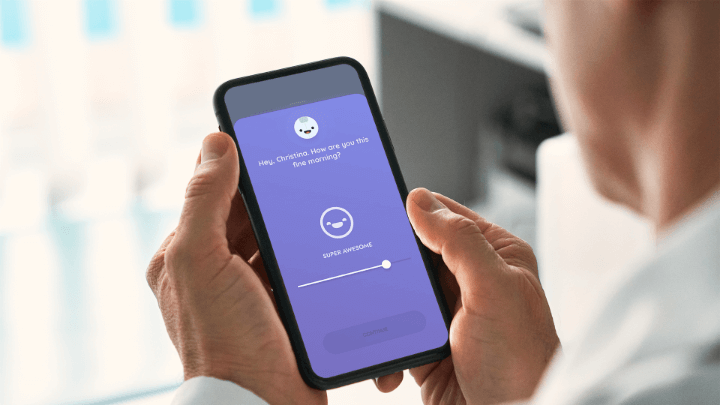
By monitoring the heart rate, blood pressure, and other biometric data, IoT healthcare devices can infer information about the patient’s current mood and mental health. More advanced IoT devices can even track the movement of a person’s eyes.
Traditionally, the continuous tracking of a person’s mental health is quite challenging. Medical professionals must periodically ask about the patient’s feelings to determine their diagnosis, yet the experts cannot predict the mood swings of patients. Another issue is the subjective interpretation of the patients—they may not represent their feelings accurately or even lie.
The main advantage of IoT devices is that they rely on objective biometrics rather than the testimony of a person. These health indicators are not controlled by the patient and serve as a good indication of a person’s mental health. Further, patient monitoring may continue while they are sleeping as well.
Even so, there are some concerns with the reliability of these results. These devices cannot predict depression or other symptoms with 100% accuracy.
Yet, these problems also exist with the other option of conversing with the patient. Therefore, since there is no better alternative, these IoT devices are an invaluable tool for monitoring depression.
6. Parkinson’s disease monitoring
A surprising use of IoT technology is in its use for the treatment of patients with Parkinson’s disease. These healthcare devices can track the symptoms of Parkinson’s disease and the fluctuation in the severity of these symptoms throughout the day.
Medical professionals must be able to track the symptoms of Parkinson’s and their fluctuation to administer proper medical treatment to combat this disease. Usually, hospitals require patients to stay in healthcare facilities for a prolonged time to monitor them effectively.
IoT devices automatically collect patient data and make this process a lot easier. This patient monitoring not only provides significant cost savings but enables patients to live more independently since they do not need to stay in hospital rooms for an excessive amount of time.
The main issue with detecting the symptoms is how sensitive a device is to possible symptoms. If the device is too sensitive, it might falsely flag something as a symptom. On the other hand, a device that is not sensitive enough might miss some symptoms.
However, there are already papers trying to give solutions to the limitations of detecting Parkinson’s disease. Given the possibility of an independent life, some inaccuracy does not raise concerns.

Learn how IoT can transform your services with expert advice
Discover and compare the IoT solutions available to your and use the expertise of BGO Software’s specialists to find out how to implement them to your practice.
7. Connected inhalers
These IoT devices are essentially smart inhalers connected to a phone app. Their purpose is that they can provide periodic visual or audio reminders to take medication. They can even give instructions on the proper use of such inhalers.
The main issue with illnesses such as asthma or COPD is that they involve sudden attacks with no prior indication. Two out of three deaths related to asthma can be prevented through timely reviews of care, better medication, or better management of the condition in general. (3)
Connected inhalers provide many benefits for patients:
- They let them track their medication use
- Provide insight into causes of symptoms by giving allergen forecasts
- Instruct patients on their technique when using the inhalers
- Alert for potential seasonal triggers and pollen counts
IoT devices facilitate the work of medical professionals as well by:
- Providing usage reports showing the medicine intake of the patients
- Provide information helping to adjust the patient care
- Alert for unexpected or erratic usage of medication
- Enable remote supervision when physical visits are not possible
The main issue with these connected medical devices is that patients may forget their inhalers at home, leaving them at increased risk of an attack. On the other hand, the constant provision of information and reminders to the patient could lead to them overusing their medication
However, since inhalers are connected to a phone app, these IoT devices can provide alerts in case the patient has forgotten their inhaler. Further, these devices can alert patients who overuse their medication.
At a minimum, an IoT inhaler can give usage reports to medical professionals and alert them of misuse so that a doctor can proactively respond
8. Ingestible sensors
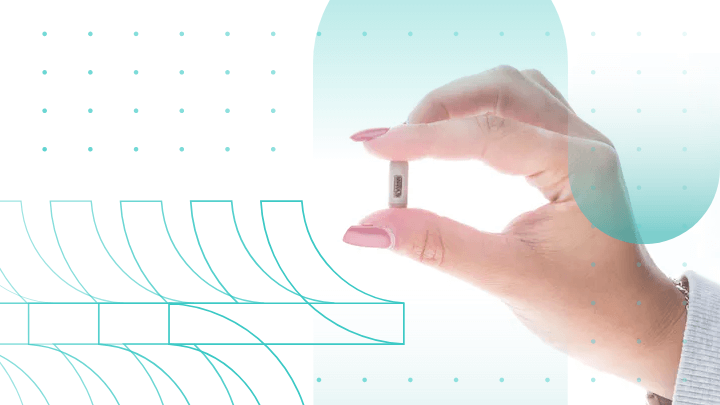
Much as the name suggests, these medical devices are small sensors that are ingested and designed to either pass through or dissolve in the digestive tract. A lot of these devices resemble the shape of a pill that a person must swallow.
Their purpose is to collect various biometric data, such as determining the PH level of the stomach or identifying the presence of internal bleeding.
Medical professionals have been collecting such patient data up until recently with probes/cameras inserted through a tube in the digestive tract. However, specific patients find this procedure too invasive.
Using digestible sensors enables patients to choose a much less intrusive procedure. Unlike traditional methods, using ingestible sensors is much less messy and disruptive since the sensor can either independently pass or dissolve in a patient’s digestive tract. The process is smoother since a medical professional does not need to manually insert the sensor into the digestive system.
Yet, this technology is still new. Ingestible sensors need to be small enough to easily be ingested and to be able to either dissolve or pass through a patient’s digestive tract.
That is not to say this IoT technology is still impractical. The IoT technology will likely soon meet these requirements. Many companies are hard at work trying to meet the required standards.
9. Connected contact lenses
Unlike standard contact lenses, these connected devices include a camera and a sensor. These Iot lenses provide better vision and can monitor for early symptoms of diseases.
The main issue is that the eyes naturally weaken or develop certain diseases over time. Sometimes these diseases can progress for a long time without the patient searching for medical attention. Certain eye diseases could rapidly develop, which does not leave the patient with a lot of time to react.
Connected contact lenses can look for early signs of certain eye diseases. Yet, some general medical conditions can also be detected with IoT lenses as well, such as the early signs of diabetes through the glucose levels of the tears.
Lastly, the presence of cameras in the lenses enables patients to take pictures with their lenses, which is why the technology is developed even by companies working outside the healthcare sector.
Many companies are already finding a lot of uses for this technology. However, if a hacker can breach the security of these connected devices, the people using such lense may be spied on without his knowledge. Having access to what a person is seeing is a terrifying prospect.
For these reasons, data security should be a primary concern for healthcare companies. Clients should seek trusted companies with a cohesive portfolio of projects which are up to date with the latest protection standards.
10. Robotic surgery
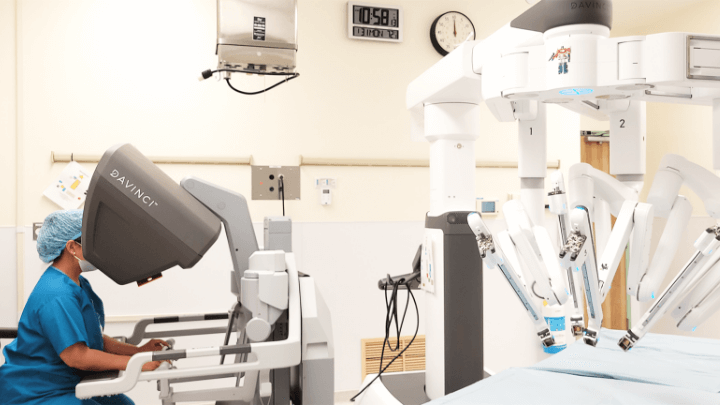
A new way of conducting surgeries is through IoT medical devices. Surgeons can inject small devices like Internet-connected robots into the human body to perform surgeries. Professionals use these to reduce human error when the operation requires precision.
The main issue is that the incisions required to conduct surgeries by hand are bigger when compared to their robotic counterparts. Human hands need more space when they perform complex procedures.
When using these IoT robotic devices, surgeons can do more precise and effective operations. The incisions are smaller due to easier insertion of the IoT devices. All of which leads to a less invasive procedure for the patient and shorter recovery times.
The main requirement for such devices is that they must be small and reliable enough to perform complex procedures. They must also be able to accurately analyze the conditions inside a person’s body and formulate an appropriate decision for the surgery.
These requirements do not seem to constitute an unsolvable problem since surgeons already use these devices in numerous surgeries. They are already invaluable tools for medical professionals. The use of IoT robots in surgeries will likely increase as technology advances.
Yet, a common element between the above-mentioned devices is their connection to the Internet. People value data security when working online, and working with Internet of Things healthcare devices is not any different.

Whether you’re a startup, a Fortune 100 company or a government organisation, our team can deliver a solution that works for you.
BGO Software
It is evident from the above-mentioned security risks that even if IoT devices can enable patients to live a better life, they may expose sensitive data.
Therefore, it is in the best interest of the healthcare industry and patients to work with companies specialized in healthcare software. Among these companies, BGO Software stands as one of the leading companies in this market.
